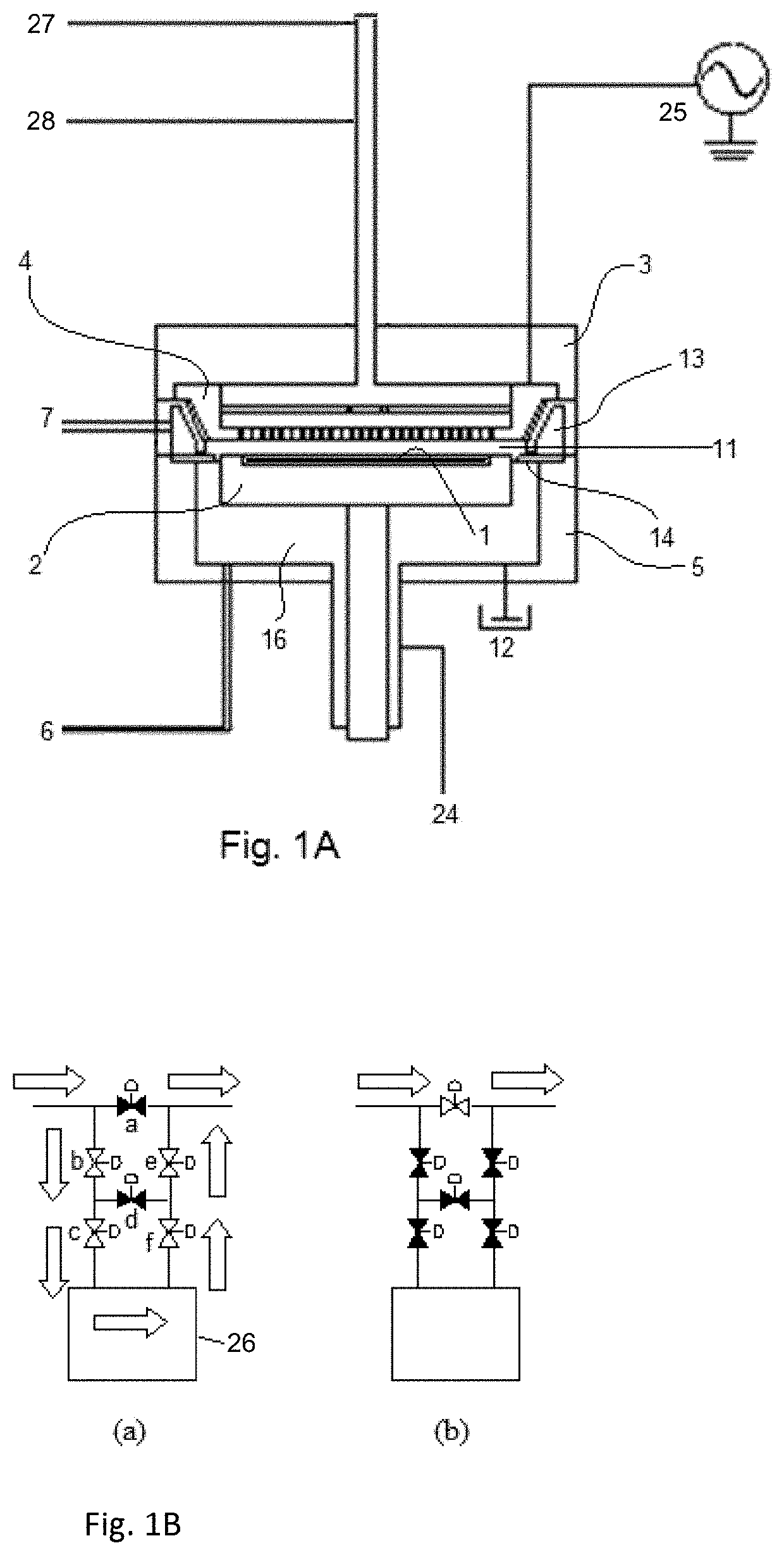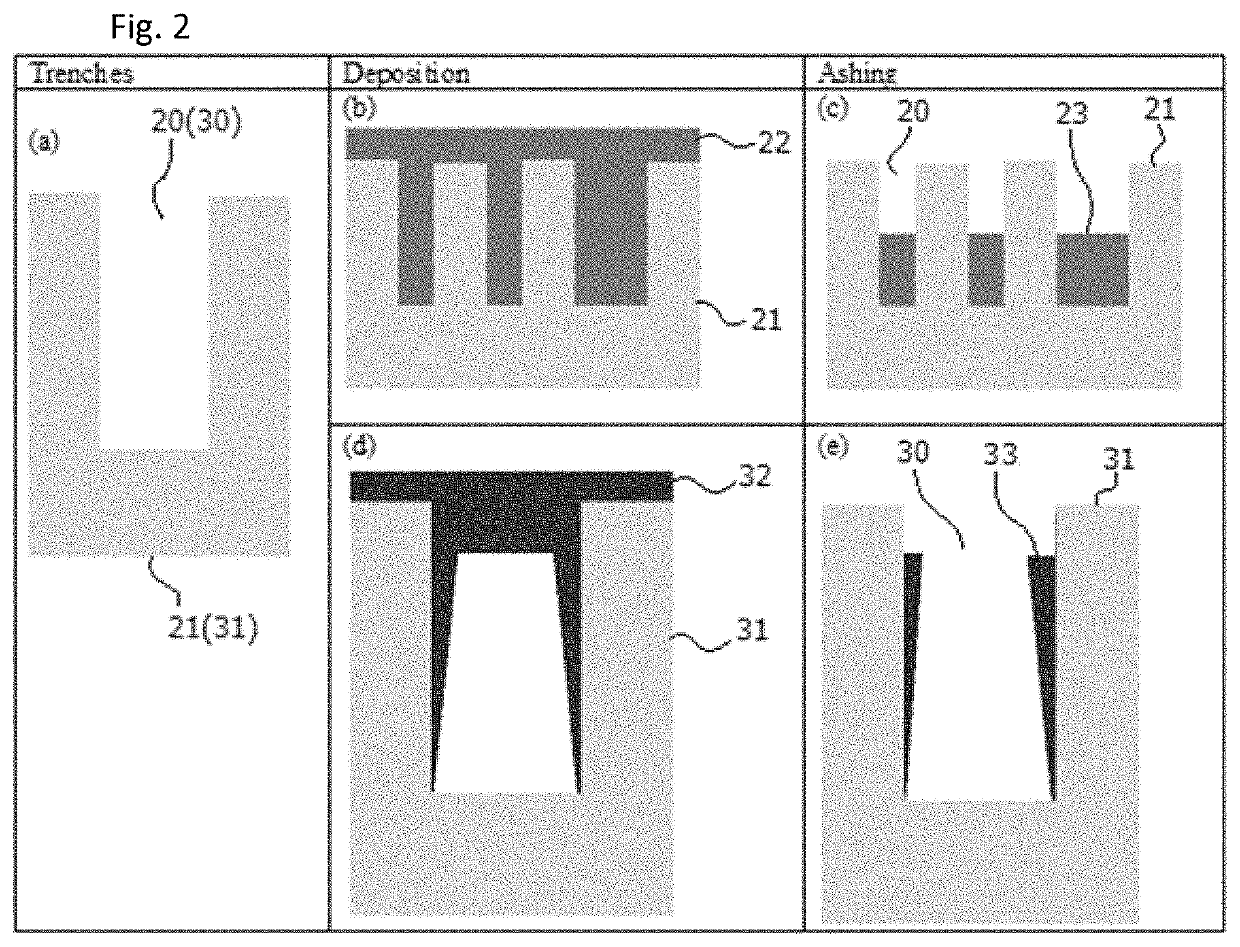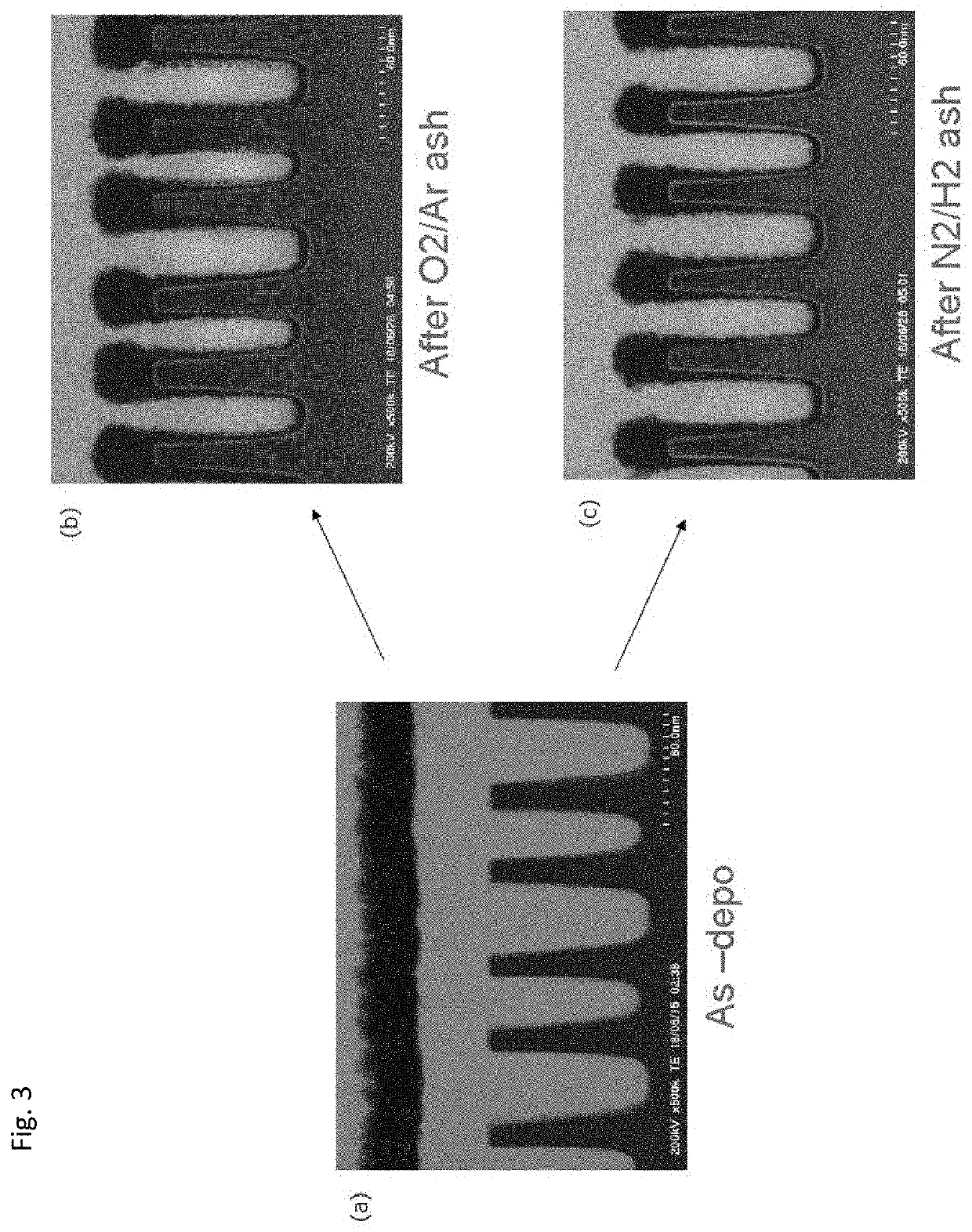Method of forming topology-controlled amorphous carbon polymer film
- Summary
- Abstract
- Description
- Claims
- Application Information
AI Technical Summary
Benefits of technology
Problems solved by technology
Method used
Image
Examples
example 1
[0073]An amorphous carbon polymer film was deposited on a Si substrate (having a diameter of 300 mm and a thickness of 0.7 mm) having trenches with an opening of approximately 20 nm, which had a depth of approximately 200 nm (an aspect ratio was approximately 10), by PEALD-like process in a bottom-up manner under the same conditions as in Reference Example 1 except that the deposition cycle was repeated 210 times (p=210) so that the film accumulated on the top surface of the substrate to a thickness of 100 nm. Thereafter, ashing was continuously conducted using a mixture of O2 and Ar in the same manner as in Reference Example 1 except that RF time was shortened to 90 seconds so as to form film structures having bottom-only topology wherein the film was ashed to a depth of 181 nm from the top surface of the substrate.
[0074]FIG. 9 shows STEM photographs of cross-sectional views of the trenches subjected to the bottom-up deposition, wherein (a) represents trenches at completion of depo...
example 2
[0075]An amorphous carbon polymer film was deposited on a Si substrate having trenches in the same manner as in Example 1 except that ashing time varied.
[0076]FIG. 10 shows STEM photographs of cross-sectional views of the trenches subjected to bottom-up deposition (full fill), wherein raw (a) represents a mixture of wide trenches and narrow trenches having different widths (the scale represents 300 nm), raw (b) represents intermediate trenches (the scale represents 60 nm), and raw (c) represents wide trenches with slight difference in width (the scale represents 60 nm), column (1) represents the trenches with full-fill deposition (210 cycles of deposition) prior to ashing, column (2) represents the trenches after ashing for 105 seconds, column (3) represents the trenches after ashing for 129 seconds, and column (4) represents the trenches after ashing for 165 seconds.
[0077]FIG. 11 shows STEM photographs of cross-sectional views of the trenches subjected to bottom-up deposition, wher...
reference example 2
[0079]An amorphous carbon polymer film was deposited on a Si substrate (having a diameter of 300 mm and a thickness of 0.7 mm) having trenches with an opening of approximately 150 nm, which had a depth of approximately 2500 nm (an aspect ratio was approximately 17), by PEALD-like process in a bottomless manner under the same conditions as in Reference Example 1 except that the deposition cycle was repeated 350 times (p=350) so that the film accumulated on the top surface of the substrate to a thickness of 160 nm.
[0080]The bottomless deposition has been confirmed by STEM photographs of cross-sectional views of trenches subjected to the bottomless deposition, which include (a) a view of a series of the film-deposited trenches, (b) an enlarged view of a top portion of one of the trenches, (c) an enlarged view of a bottom portion of the trench, and (d) an enlarged view of sidewalls of the trench. It has been confirmed that although the trenches are not fully filled with the film as obse...
PUM
| Property | Measurement | Unit |
|---|---|---|
| depth | aaaaa | aaaaa |
| aspect ratio | aaaaa | aaaaa |
| aspect ratios | aaaaa | aaaaa |
Abstract
Description
Claims
Application Information
 Login to View More
Login to View More - R&D
- Intellectual Property
- Life Sciences
- Materials
- Tech Scout
- Unparalleled Data Quality
- Higher Quality Content
- 60% Fewer Hallucinations
Browse by: Latest US Patents, China's latest patents, Technical Efficacy Thesaurus, Application Domain, Technology Topic, Popular Technical Reports.
© 2025 PatSnap. All rights reserved.Legal|Privacy policy|Modern Slavery Act Transparency Statement|Sitemap|About US| Contact US: help@patsnap.com



